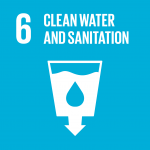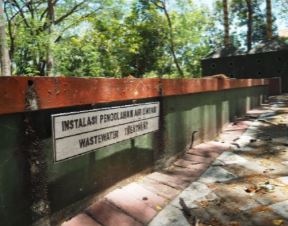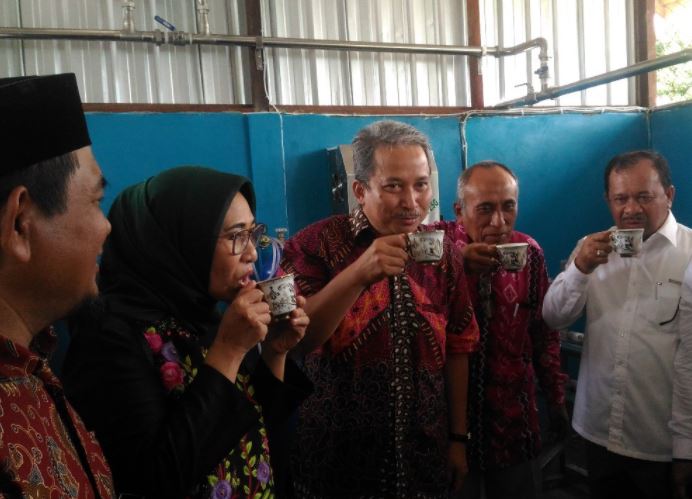“Without water we can’t live. Water supports out agriculture and aquaculture. Clean water is vital. However, due to bad economics or poor infrastructure, millions of people including children die every year from diseases associated with inadequate water supply, sanitation and hygiene.”
(THE Impact Rankings)
SDG 6: CLEAN WATER AND SANITATION
Water Consumption per Person
ITS Water Consumption 2022
Tracking water usage is crucial for several reasons, primarily due to the global significance of preserving freshwater resources. Understanding and monitoring water consumption patterns enable individuals, communities, and universities to assess impact on the environment and work towards conservation. Efficiency in water use is becoming one of the priorities of ITS Campus. ITS measures the total volume of water used in the university regularly. Water consumption is tracked from several water meters installed within the campus area such as Manyar campus, Sukolilo campus, and Cokroaminoto campus.
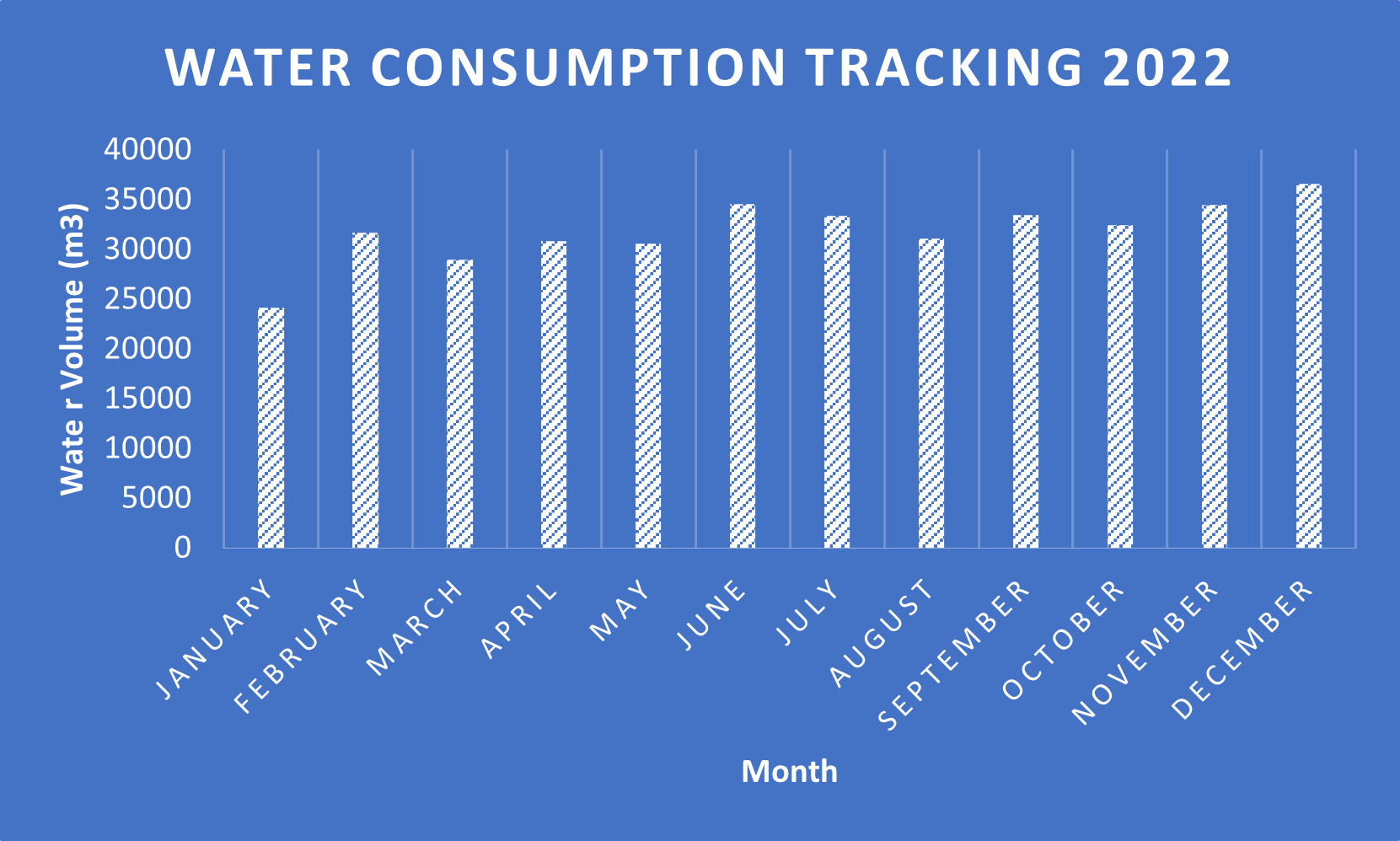
Water Consumption from Water Conservation Programs
ITS has water sources other than PDAM, which is gathered from water conservation. More than half of the water saving program has been successfully implemented by ITS. ITS has reservoirs and 18 pounds. Lakes and reservoirs have a total capacity of 1,372.63 m3 to supply water needs.
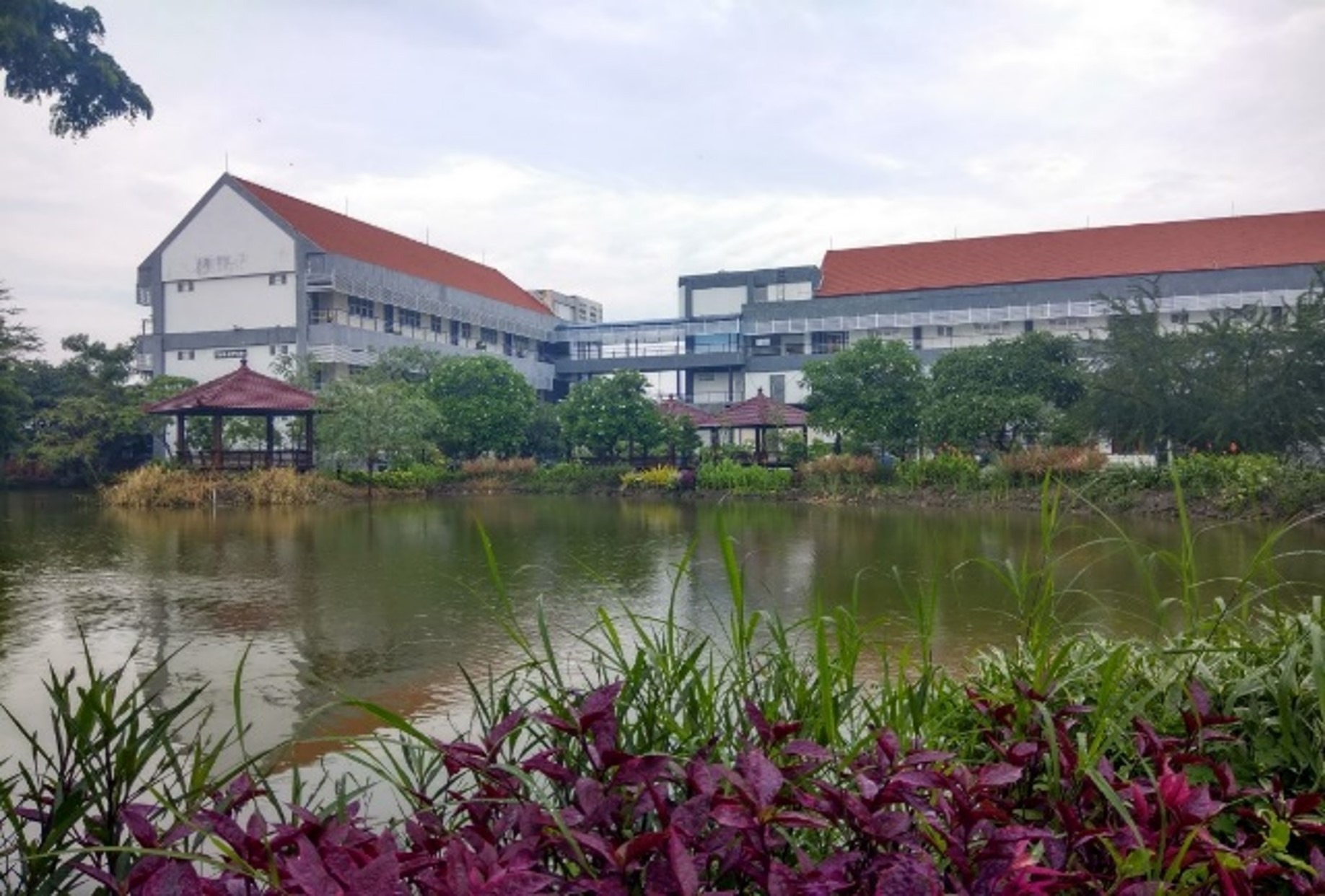
Water Usage and Care
Wastewater Programs Implementation
ITS always strives to support SDGs which is very important for life in the campus area. One of them is wastewater management. ITS implements a program of recycling 30% of total water requirements. Wastewater treatment is carried out at numerous campus locations, including the Manarul Ilmi Mosque, the Department of Industrial Engineering, the ITS Research Center building, the ITS Rectorate building, and so on.
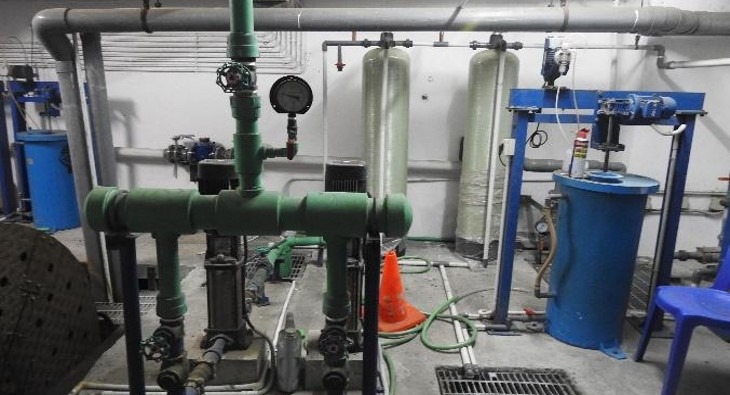
Wastewater Management Using the Smart Eco Campus Concept
Water is an essential to our well-being. Water management on the ITS campus is accomplished by using water wisely that provides Ready-to-Drink Water Taps, conserving groundwater through biopores, lakes, and ponds, and treating ablution wastewater for use in watering the environment.
Sewage Disposal Management Prevents Water System Pollution
Sometimes, pollution is already present in the water system, so efforts are needed to reduce the pollutants already present in the system and prevent pollution in the water system in the future. ITS not only protects local water resources and ecosystems by implementing proper wastewater treatment procedures, but it also contributes to a cleaner and safer surrounding area. Wastewater management at ITS operates through the installation of Anaerobic Baffled Reactor (ABR) Wastewater Treatment Plants (IPAL) or simple WWTPs utilizing grease traps and settling ponds scattered all over ITS locations.
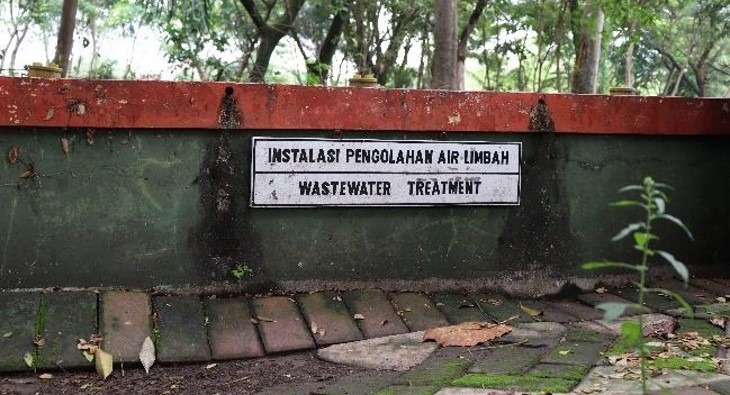
Hazardous Waste Treatment
If not correctly managed, hazardous water, which includes effluent from industrial operations, chemicals, and contaminants, causes serious concerns. Effective hazardous water management requires implementing adequate containment, treatment, and disposal strategies to prevent hazardous substances from contaminating the environment. ITS has hazardous waste treatment strategies applied to prevent water system pollution. ITS Hazardous and Toxic Waste (B3) report which 50-75% is handled separately by grouping, collecting and submitting B3 originating from the Department of Chemical Engineering, Environmental Engineering, Chemistry, Materials, Biology, Machinery and Laboratories.
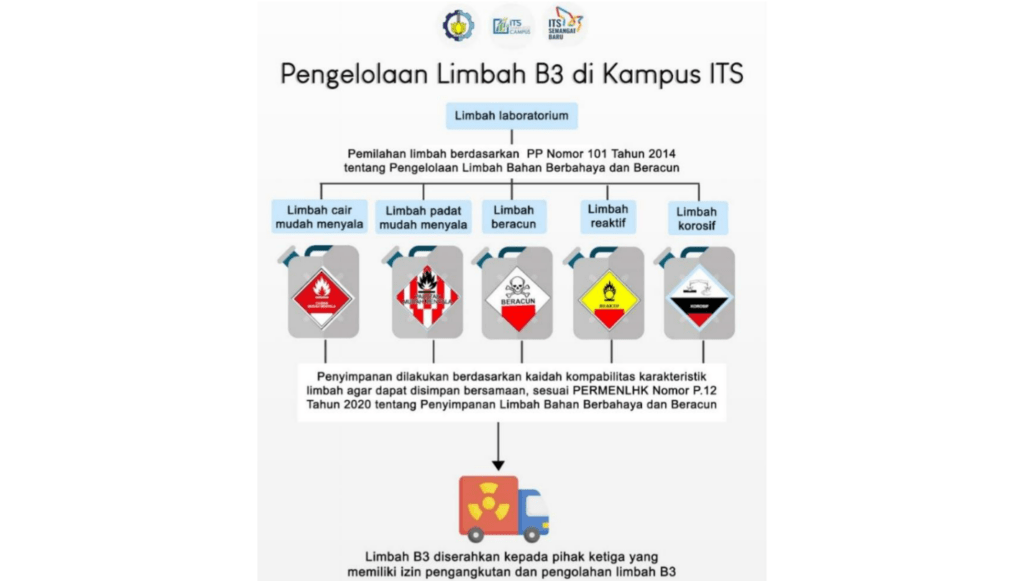
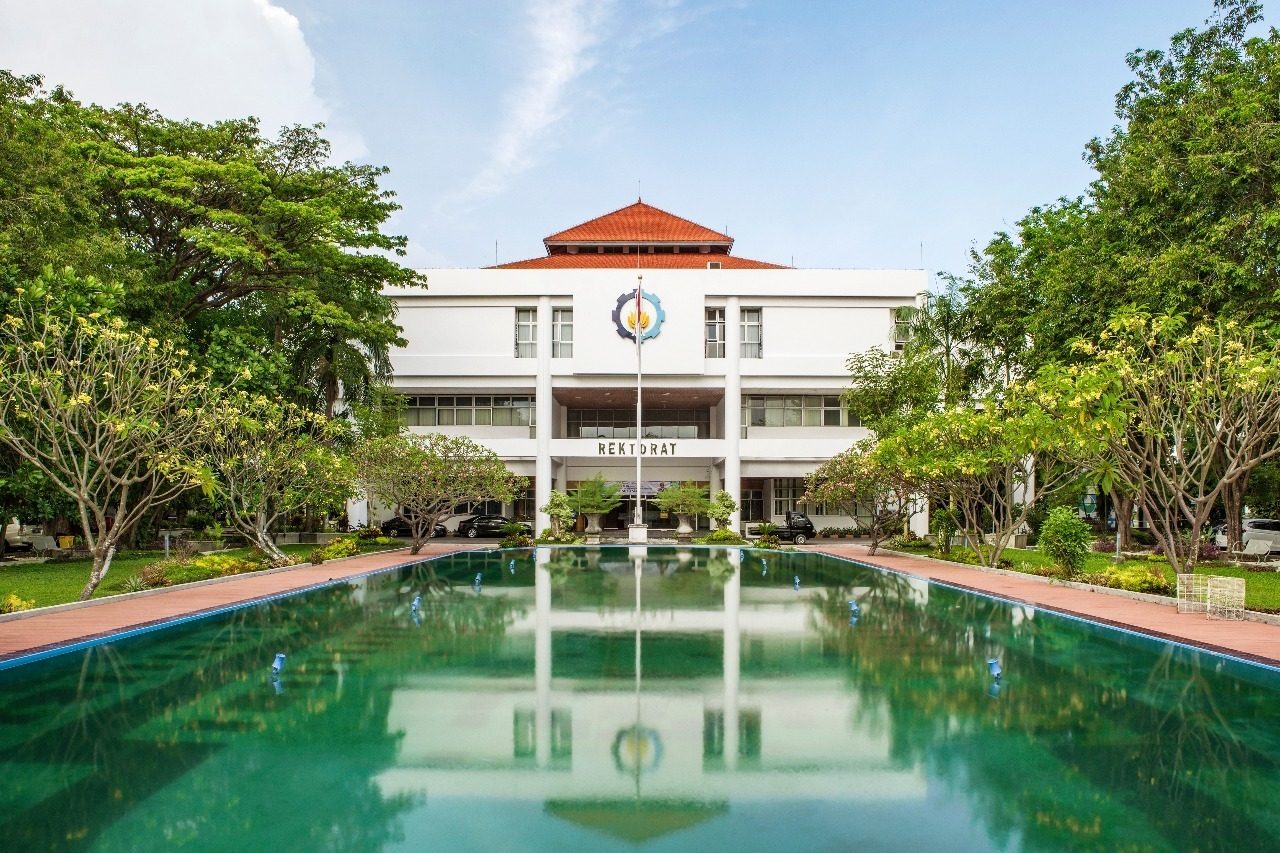
As one of the big universities, the amount of ITS water consumption in the campus area is also very big. So, ITS seeks to provide Ready-to-drink Water Faucets to support ITS flagship program, the Smart Eco Campus. Currently, KASM ITS is provided within the Department of Mechanical Engineering, Engineering Physics, Materials and Metallurgical Engineering, Manarul Ilmi Mosque, and the central parking area. This effort is carried out in collaboration with the Regional Center for Drinking Water (PDAM) of Surabaya City with guaranteed drinking water quality where the Surabaya City Health Office will monitor it once a month. In addition, the quality of drinking water will also be monitored by an independent laboratory that has been certified ISO 17205.
Application of Buildings with the Principle of Minimizing Water Use
Building standards that limit water use on a campus are an important step toward improving sustainability. Campuses can save water by complying to such building requirements. ITS uses elevated structural construction designs to allow the easier circulation of rainfall. Following alongside building structures, ITS replaces conventional building equipment with water-efficient technology. More than half of the campus’s water-saving equipment has been installed.
Elevated building structures for rainwater storage
One of the water conservation programs on the ITS campus is the elevated building construction. Almost of ITS buildings use elevated construction structures. The purpose of elevated building construction is to optimize the flow of rainwater. Another function is to collect rainwater in the rainy season.
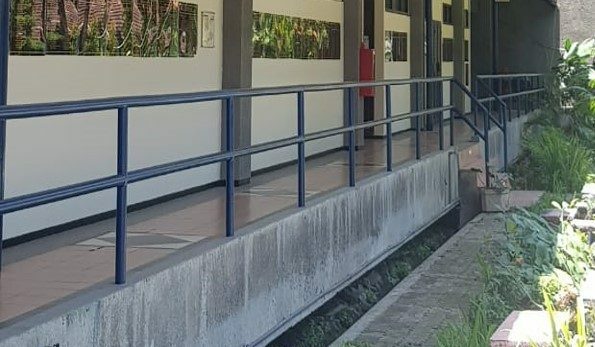
ITS: Green Open Space, Research, and Education
In development activities, environmental management must be a top priority. The existence of forests and parks in ITS is a contributor to the proportion of green open space (RTH) in the Surabaya city area. In addition to beautifying the struggle campus, green space is also used to ensure the balance of urban ecosystems, including the balance of hydrological and microclimate systems as well as other ecosystems, which in turn will increase the availability of clean air that is needed by the community. These efforts are supported by programs such as Urban Farming ITS, which with research and education activities can produce an independent form of local food security system. Routine campus activities through tree planting can also add to the greenness of the ITS campus.
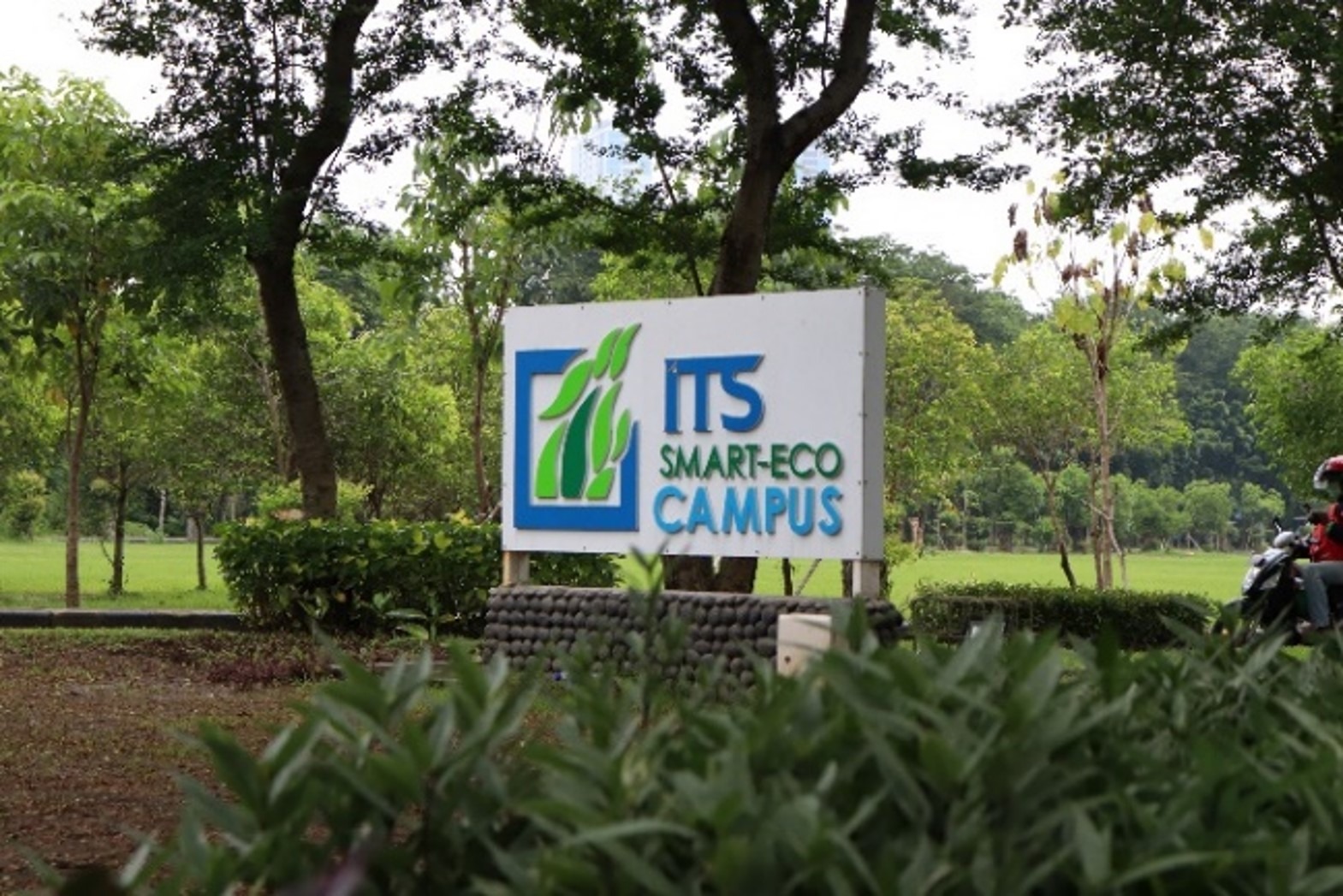
ITS Plants Tabebuya Trees to Minimize Water Usage
ITS Bertumbuh is a series of activities obtained from the ITS Berbunga and ITS Berbuah events. ITS planted plenty of new trees throughout the campus in 2022. The various tree species planted include baobab large trees, tabebuya, pule, jengkol, and durian musang king trees. The tabebuya tree was chosen for its heat resistance and appearance. Tabebuya trees are resistant to hot temperatures, making them ideal for planting on the ITS campus. Because of its high branches, around 2 m, this tree also provides shade for pedestrians.
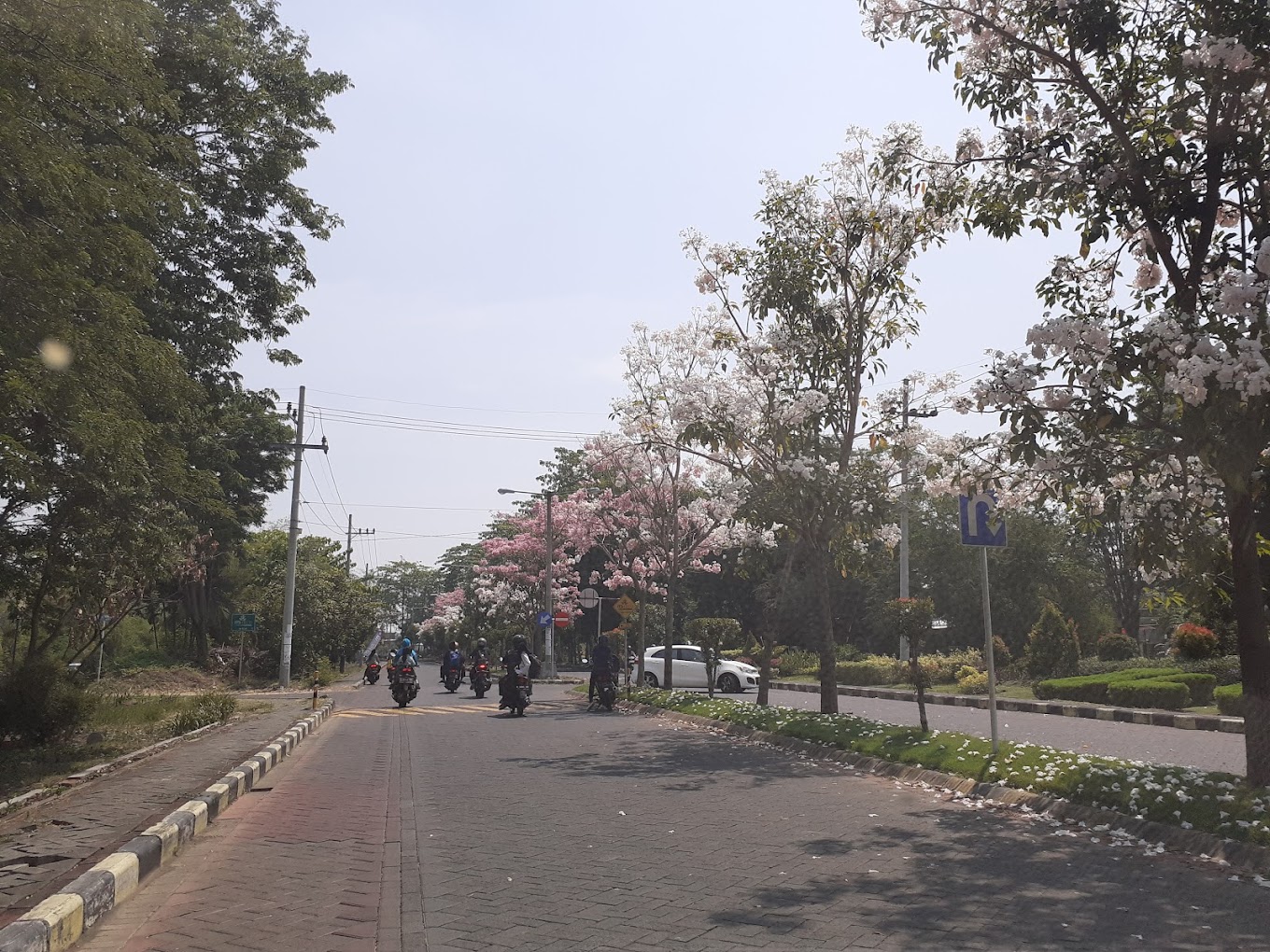
Water Re-Use
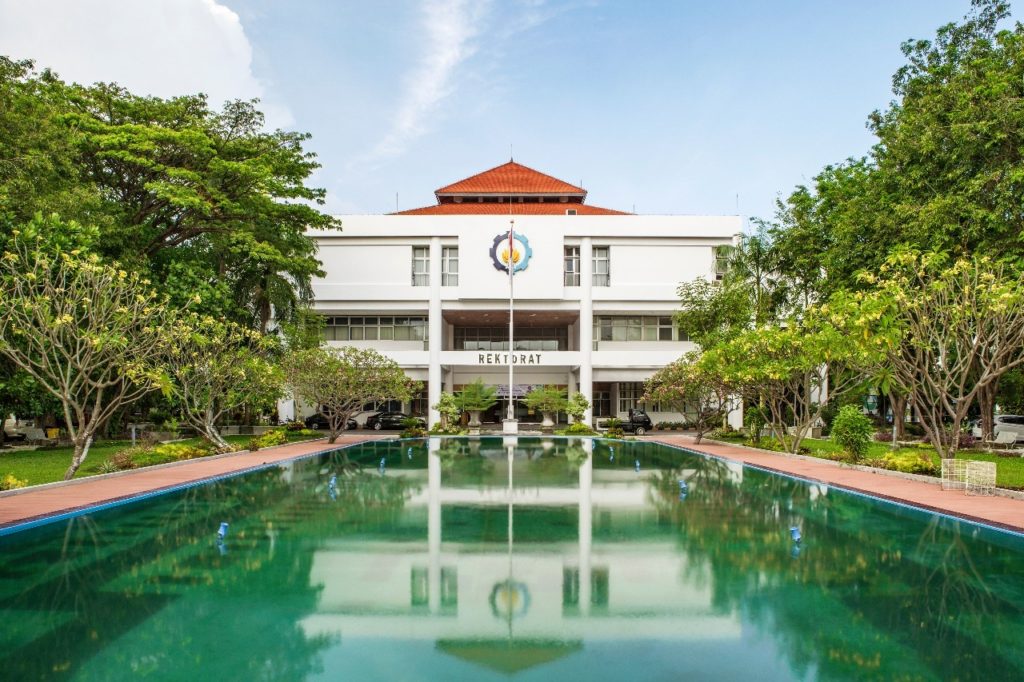
ITS always strives to support SDGs which is very important for life in the campus area. One of them is water re-use management. Water re-use management at ITS is regulated in Rector’s Statement Letter No T/38539/IT2/TU.00.08/2021. It is mentioned in chapter 3 point a that Institut Teknologi Sepuluh Nopember guarantees saving and reusing of water resources.
ITS implements the Rector’s Statement Letter policy through several programs. ITS has five water reuse programs. In general, this approach involves the recycling of wudu water, toilet wastewater, and gray water. The reuse of wudu water is applied in Manarul Ilmi Mosque, Industrial Engineering Department, Mechanical Engineering Department, and Electrical Engineering Department. While wastewater toilets are reused at the Research Center and Rectorate buildings. Finally, the Environmental Engineering Department manages gray water treatment.
Rector’s Statement Letter No T/38539/IT2/TU.00.08/2021
ITS Water Reuse Implementations




Water reuse is one of the initiatives being made to achieve water efficiency. Water reuse is directly linked to SDG 6, which refers to Clean Water and Sanitation. Policies in the ITS environment are required to maximize the implementation of water reuse management. The management of water re-use at ITS is governed by Rector’s Statement Letter No T/38539/IT2/TU.00.08/2021. It is stated in chapter 3 point a that Institut Teknologi Sepuluh Nopember ensures water resource conservation and reuse. With this policy, water reuse management is more technical.
Water reuse measurement is essential in order to track water reuse management. ITS has a water reuse measurement based on information from the ITS Sustainability Report. On the ITS campus, there are various water conservation facilities. ITS has successfully implemented more than half of the water conservation program, which consists of lake and reservoir management systems, elevated building structures as rainwater storage, rainwater harvesting, biopore installation, and long storage channel. The lake and reservoirs can absorb water over an area of 1.04 km2 (page 2). After calculations, it was discovered that the total amount of water that may be conserved is 82.51% (page 4).
Rector’s Statement Letter No T/38539/IT2/TU.00.08/2021
Water in the Community
ITS Abmas Team Assists in Groundwater Management for Tempeh Production
The ITS Community Service Team (Abmas), comprised of lecturers and students from the Chemical Department, assists the residents of Sanan Village in the treatment of groundwater. Sanan Village’s main product is tempeh, which encourages ITS Abmas to assist residents in water treatment. This groundwater is treated to make it suitable for industrial use. The technology used does not require an enormous space, is simple to use, and produces the desired outcomes. The hope in the future is that the tempeh production of Sanan Village residents will increase rapidly from before.
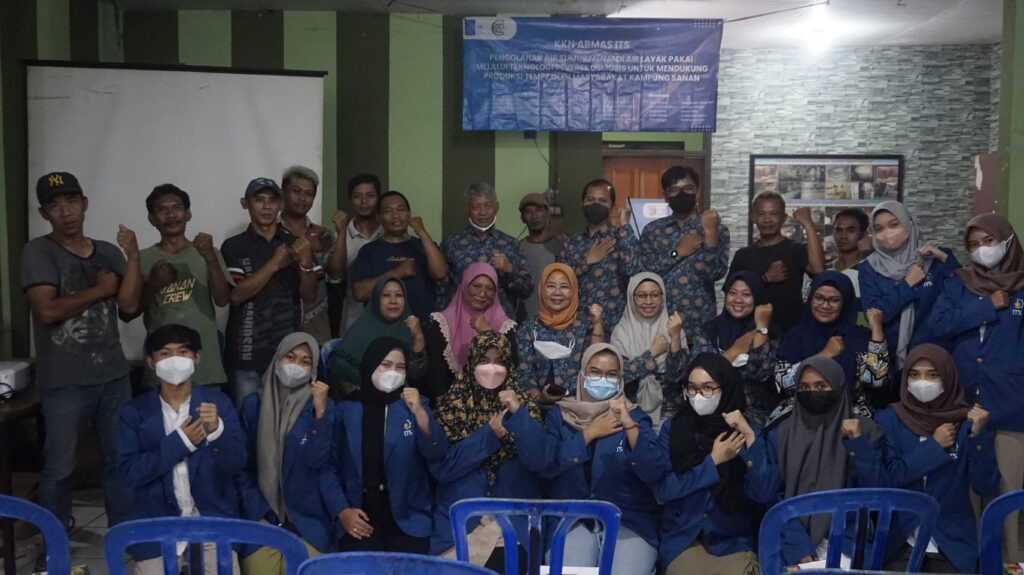

ITS Community Services (Abmas) Team Trains Domestic Wastewater Treatment Systems
The Community Services (Abmas) ITS Team continues to show concern for various community challenges by assisting in the provision of feasible solutions. This time, one of the Abmas ITS teams demonstrated their commitment by training housing wastewater managers in Tuban, East Java, on the maintenance and upkeep of the Wastewater Treatment Plant (IPAL). The goal of this event is to assist the community in enhancing the quality of their environment in order to fight water pollution.
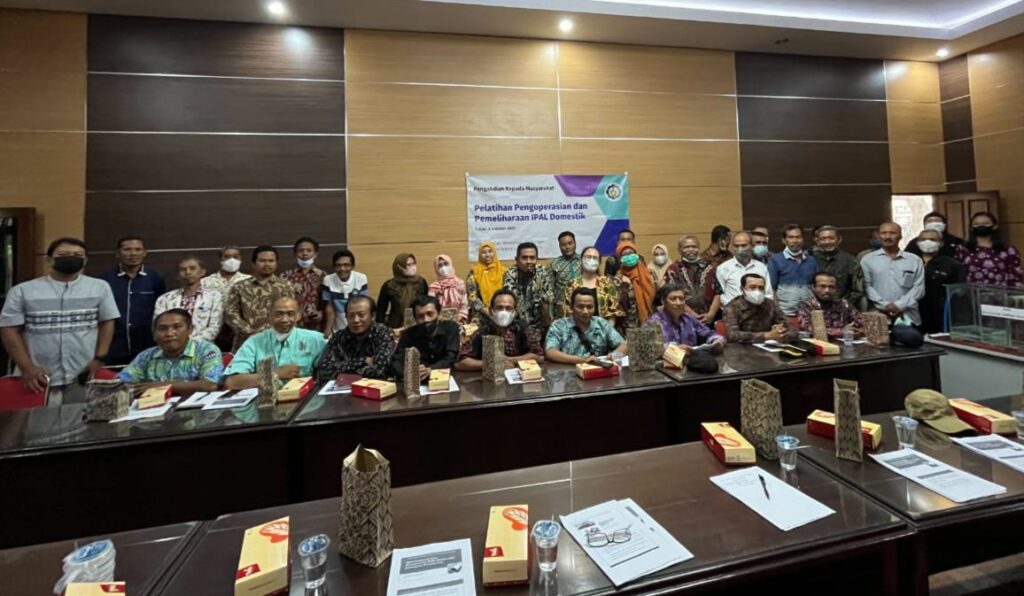


Water Management Education Through KKN Abmas Activities in Pacitan Regency
ITS Community Service Real Work Lecture Team (KKN Abmas) collaborates with local government to educate Pacitan Regency residents on water management. KKN Abmas provides clean water facilities and water management education. That activity is part of the Desa Emas program at Pacitan Regency. Educational water management is expected to support the development of clean water facilities to be utilized efficiently by the residents.
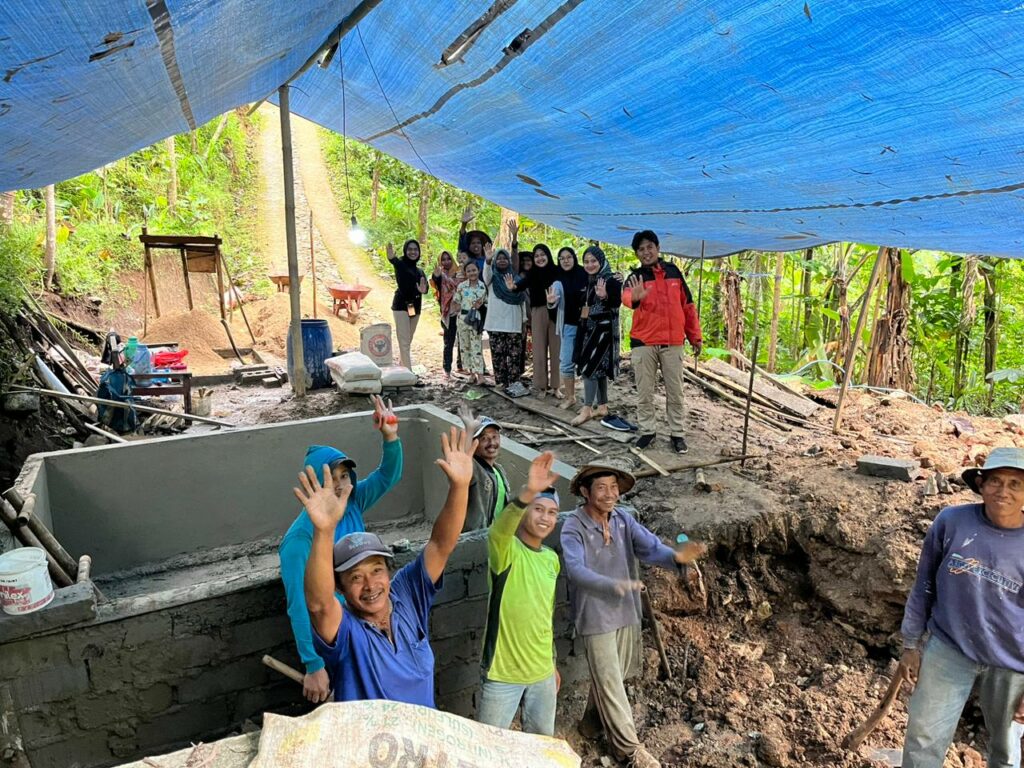

ITS Improves Water Conscious on Campus
Conscious water usage on campus plays a pivotal role in promoting sustainability and responsible environmental stewardship within educational institutions. By fostering a culture of mindful water consumption, campuses can significantly reduce their ecological footprint and contribute to the conservation of precious freshwater resources. Implementing water-saving initiatives, such as installing low-flow fixtures, implementing efficient irrigation systems for landscaping, and raising awareness through educational campaigns, not only minimizes water wastage but also sets a precedent for responsible behavior among students, faculty, and staff. ITS put signage on several location near with water resources to improve the awareness.


Abmas ITS Converts Brackish Water to Clean Water
The availability of clean water is very important for life, but not infrequently people still experience difficulties in fulfilling it due to various things, one of which is pollution. Following up on this, the Community Service Team (Abmas) of ITS helps people at Setrohadi Village to overcome clear water problems. Residents in Setrohadi Village, Gresik Regency, still depend on high salinity water sources to meet their daily water demands. To improve water quality, Abmas ITS team developed a brackish water treatment system into clean water.
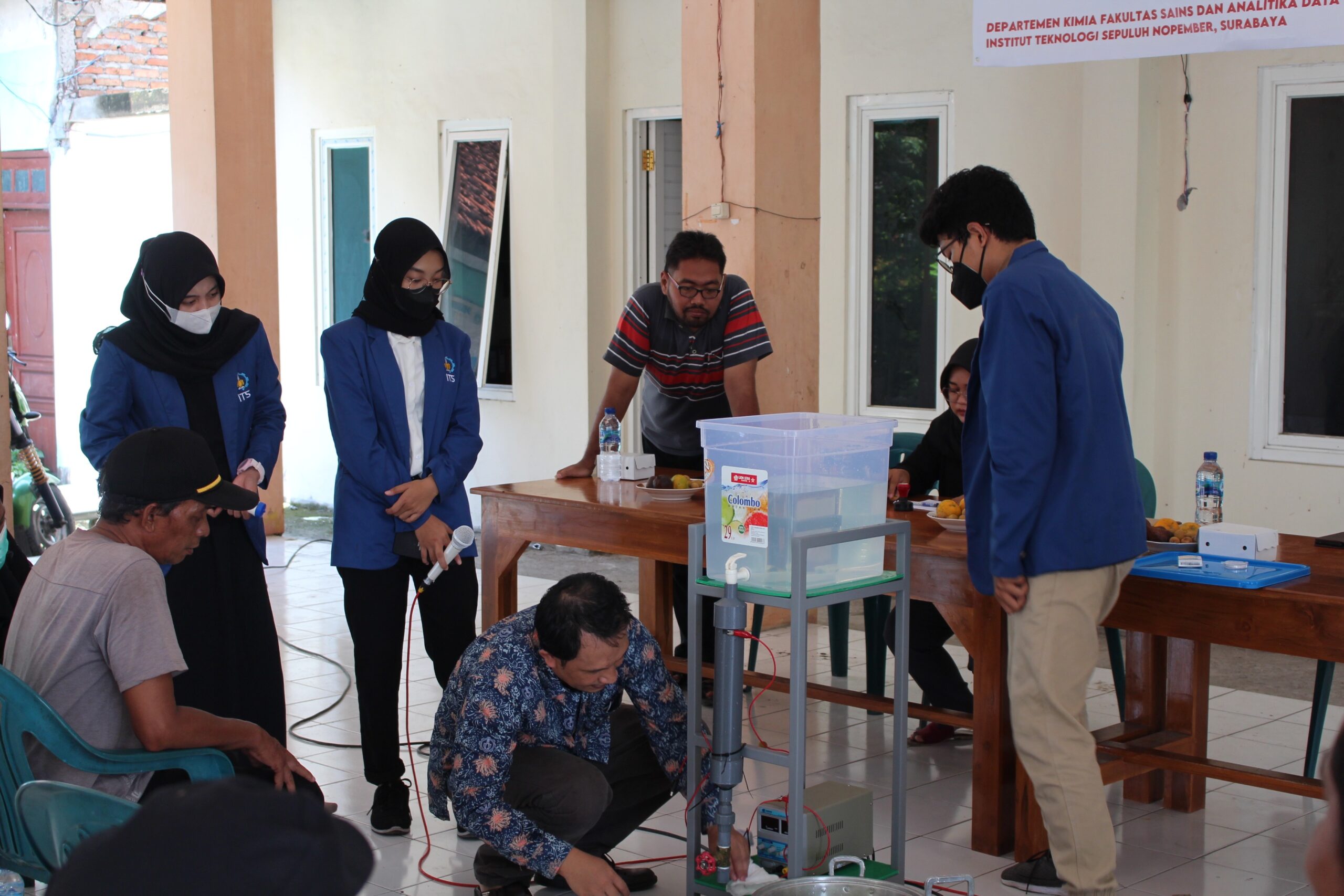

PLH Siklus ITS Conserves Water from The Kalimas River
Environmental Lovers (PLH) Siklus ITS held Water Resource Training (WARNING) to protect and conserve water resources through conservation strategies. WARNING is an example of ITS support in off-campus water conservation. WARNING assisted participants in carrying out the sampling and analytical agenda, which took place in three different locations along the Kalimas River. This program, according to PLH Siklus ITS, will give attendees with information on how to keep the watershed area through effective natural resource management.
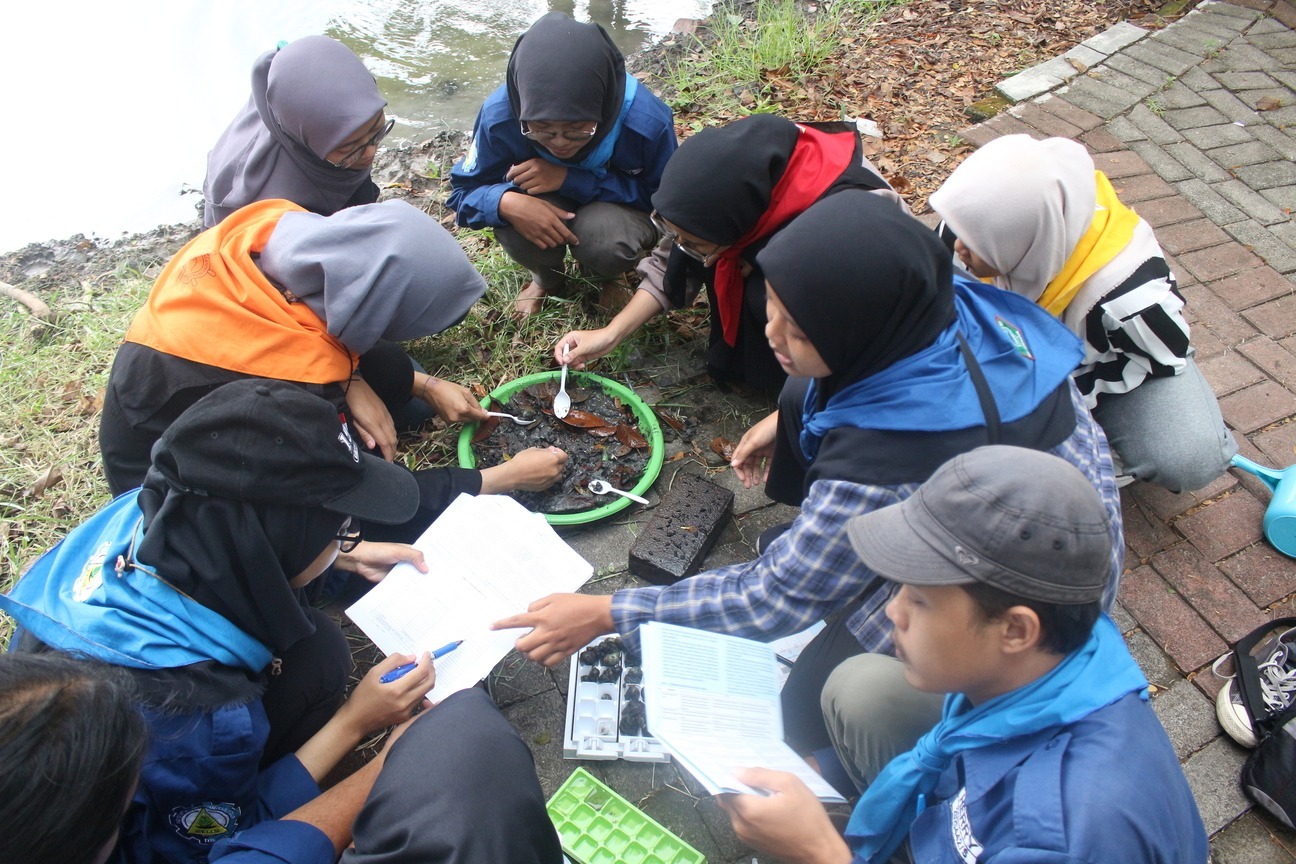





ITS Surabaya utilizes sustainable water extraction technologies on associated university grounds off campus. ITS has several types of water extraction, including lake and reservoir management systems, elevated building structures as rainwater storage, rain water harvesting, biopore installation, and long storage channel. ITS provides 18 pounds that are classified into two categories: detention ponds and retention ponds. The campus’s lakes and reservoirs are grouped into seven zones. Natural conservation is calculated using natural infiltration and runoff water.
ITS also uses the concept of green building in building construction and renovation. One of them is the implementation of water efficiency. ITS optimizes water efficiency by recycling wasted ablution water and bathroom water (gray water), which are treated in an installation unit and reused for watering and fishponds. Some units, such as the Manarul Ilmi Mosque, Department of Mechanical Engineering, and Industrial Engineering ITS, have this installation.
Source for Water Extraction at ITS
Implementation of Water Efficiency
Abmas ITS Provides Sampang Regency Residents’ Water Needs During Drought
The lack of water in dry locations during the dry season is a severe issue that must be addressed. In response to this issue, Community Service Team (Abmas) ITS constructed a wireless control-based pump system to improve the efficiency of meeting water needs of Sampang Regency. This tool’s installation take place is the Darus Salam Islamic Boarding School in Sampang Regency, East Java. This pump is also designed so that residents can know the state of the volume of water in wells and reservoirs. With this remotely operated device, the lodge can activate its own water pump without waiting for help from a third party.
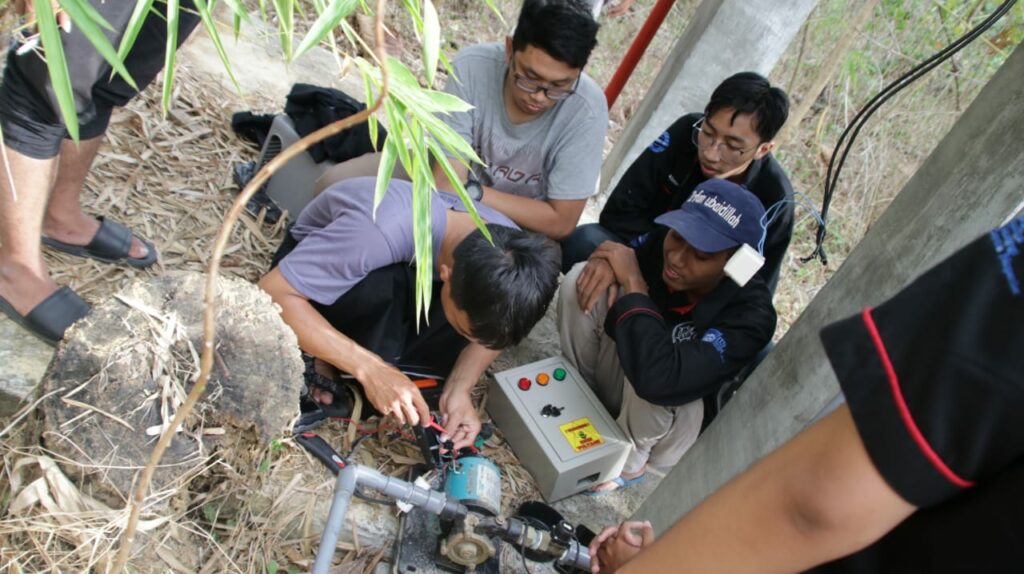

ITS Collaborates with Public Works, Spatial Planning, Public Housing, and Residential Areas (PUPR PRKP) Tuban Regency on Water Security
ITS works with the local government of Tuban Regency, specifically the Public Works, Spatial Planning, Public Housing, and Residential Areas (PUPR PRKP) Tuban Regency, on water safety procedures. Tuban Regency is experiencing issues with communal WWTPs. Abmas ITS conducted training sessions for Tuban Regency residents. Abmas ITS showed their dedication by providing training on the maintenance and care of the Wastewater Treatment Plant (WWTP) for domestic wastewater managers.



ITS Aims to Ensure Water Security in Pacitan and Mojokerto Regencies Through The Desa Emas
ITS cooperate with local government on water security in Pacitan Regency and Mojokerto Regency. This activity is part of the Desa Emas program in Pacitan Regency and Mojokerto Regency. Clean water facilities were built in 20 locations throughout 10 towns in Pacitan . Five locations were established in three villages in Mojokerto. All of these processes involve KKN Abmas students and local residents.
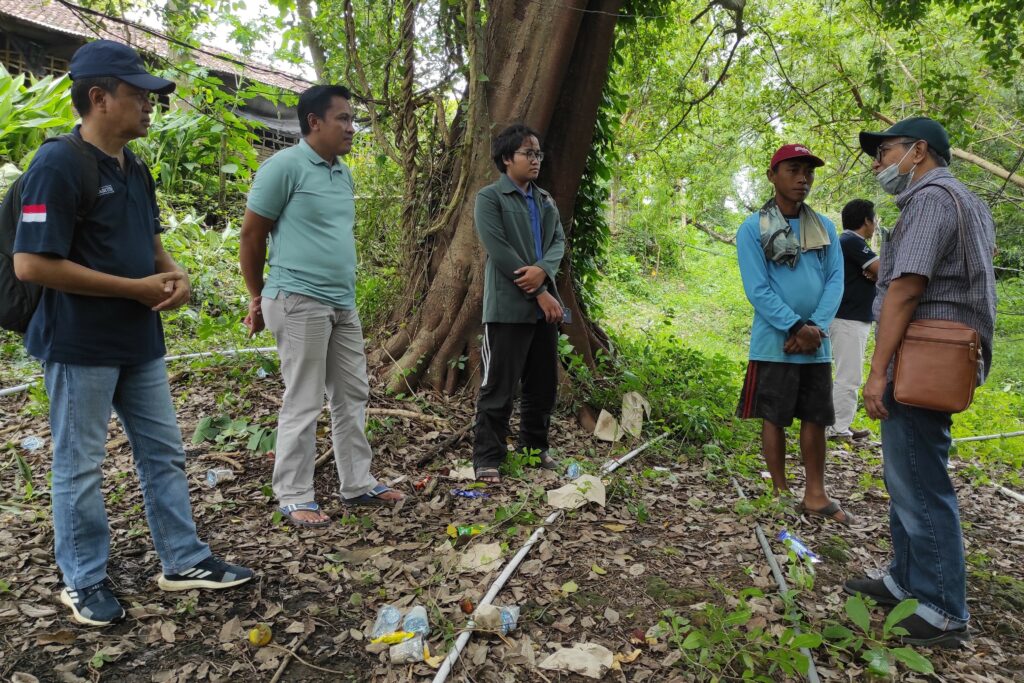

SDG 6 IN NUMBERS
382,106 m3
Volume of Water Used in the University
22,942
Campus Population
0.1
Percentage of Water Recycled
38,210 m3
Volume of Water Recycled
382,106 m3
Total Water Consumption
